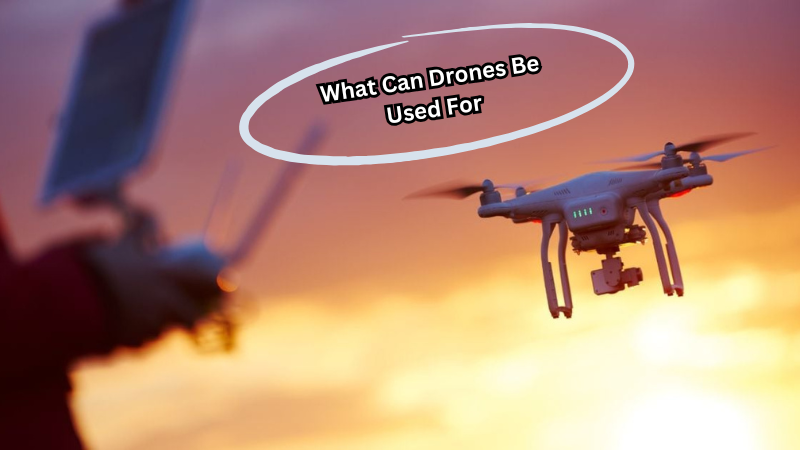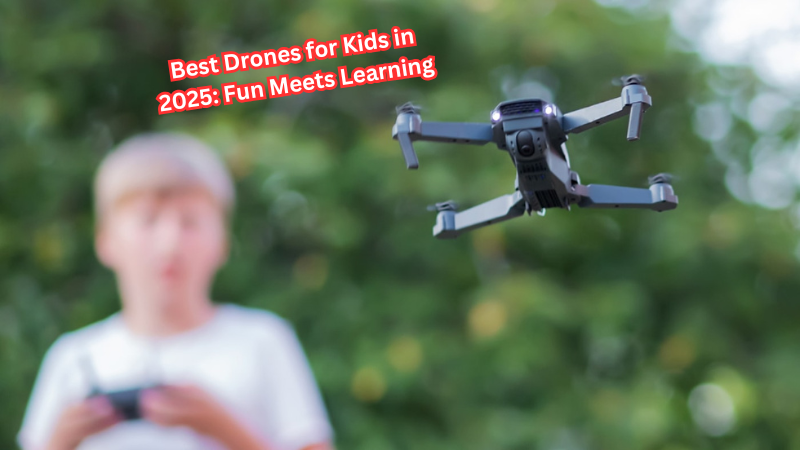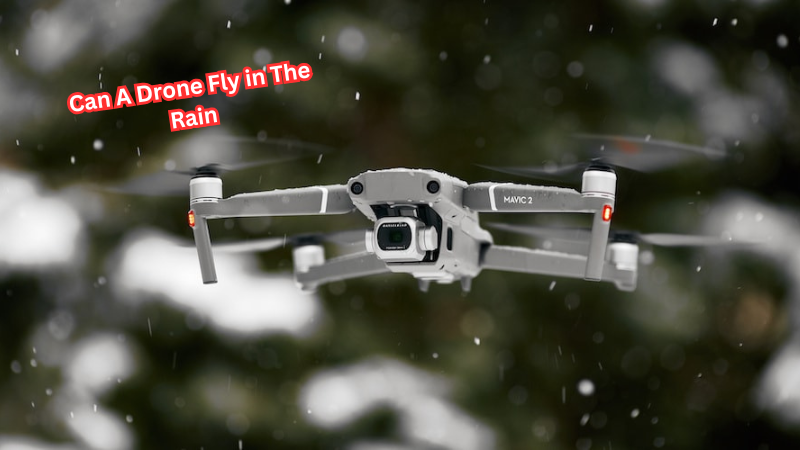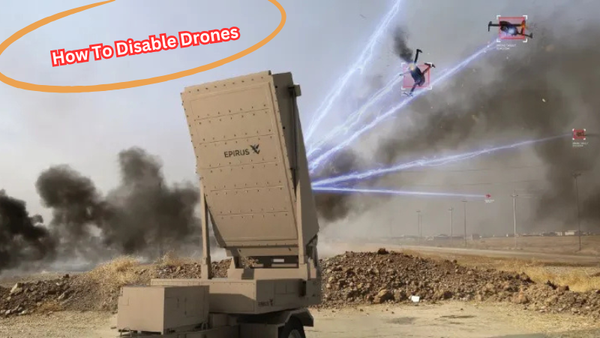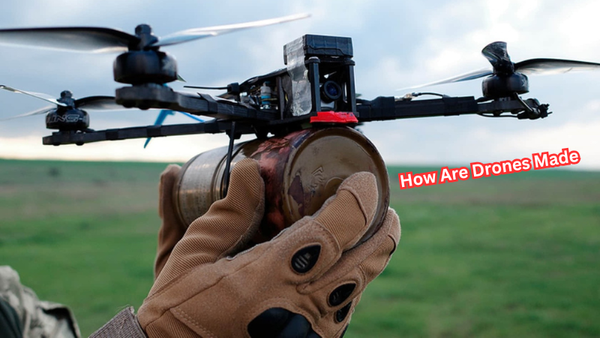Drones, also known as unmanned aerial vehicles (UAVs), have become increasingly popular in recent years due to their versatile capabilities and applications.
Originally used for military purposes, drones are now being utilized for various commercial and recreational purposes. With advancements in technology, these flying machines are becoming more accessible and affordable, making them an attractive option for individuals and businesses alike.
In this document, we will explore the vast range of ways that drones can be used today. From aerial photography and videography to delivery services and search-and-rescue missions, the possibilities seem endless.
We will also discuss the benefits of using drones in different industries such as agriculture, construction, and environmental conservation. Additionally, we will touch upon the challenges and regulations that come with this emerging technology. So, let's dive in and discover the many uses of drones!
What Is a Drone?
A drone is an unmanned aerial vehicle (UAV) that is controlled remotely by a human operator or programmed to operate autonomously. They come in various shapes and sizes, from small quadcopters to large fixed-wing aircraft, and are equipped with different sensors and cameras depending on their intended use.
Drones were initially developed for military purposes, but with advancements in technology, they have become more accessible and affordable for civilian use. Today, drones are not just used for recreational purposes, but also for commercial and industrial applications.
Top Uses of Drones
Drones have gained popularity for their ability to access hard-to-reach areas and perform tasks that would be dangerous, time-consuming, or expensive for humans to do. Let's take a closer look at some of the top uses of drones in different industries.
Aerial Photography and Videography
Drones have revolutionized aerial photography and videography by providing stunning, high-resolution shots from unique perspectives. They are widely used in filmmaking, real estate, events, and marketing campaigns.
From capturing breathtaking landscapes to recording action-packed scenes, drones offer a cost-effective and versatile solution for creative professionals.
Their ability to fly into hard-to-reach areas enables photographers and videographers to push the boundaries of visual storytelling, delivering results that were once achievable only with expensive helicopter rentals or cranes. Drones make professional-quality content more accessible than ever.
Delivery Services
Drones are transforming delivery systems by offering a faster and more efficient way to transport goods. Companies like Amazon and UPS are testing drone technology to deliver parcels, food, and medical supplies directly to customers' doorsteps.
These unmanned aerial vehicles (UAVs) can navigate traffic, reduce delivery times, and reach remote areas that are otherwise difficult to access. With advancements in technology, drones are becoming a sustainable alternative for last-mile deliveries, cutting down on fuel consumption and enhancing convenience for both businesses and consumers.
Agriculture and Land Management
Drones are making waves in agriculture by improving efficiency and precision in farming practices.
Equipped with advanced sensors and cameras, they can monitor crop health, assess soil conditions, and map out fields in detail. Farmers use drones to spray pesticides, distribute fertilizers, and even plant seeds, reducing labor costs and minimizing environmental impact.
By providing real-time data, drones help farmers make informed decisions to optimize yields and manage resources effectively. They are an invaluable tool for modernizing agriculture and promoting sustainable land management practices.
Infrastructure Inspection and Maintenance
Drones are revolutionizing infrastructure inspection and maintenance by offering a safer and more efficient alternative to traditional methods. They can easily access hard-to-reach areas, such as bridges, towers, and power lines, capturing high-resolution images and videos for analysis.
Equipped with thermal imaging and advanced sensors, drones can detect structural weaknesses, leaks, or damage early, reducing the risk of accidents and costly repairs. By eliminating the need for scaffolding or manual inspections, drones save time, cut costs, and ensure thorough and accurate monitoring of critical infrastructure.
Search and Rescue Operations
Drones have become a vital tool in search and rescue (SAR) operations, providing speed and accuracy in emergencies.
Equipped with thermal imaging, night vision, and GPS technology, drones help locate missing persons or assess disaster zones in real time. They can cover large areas quickly, access hazardous or hard-to-reach locations, and deliver essential supplies where needed.
By streamlining SAR efforts and minimizing risks for human rescuers, drones are saving lives and improving the efficiency of emergency response teams across the globe.
Environmental Conservation
Drones are playing a critical role in environmental conservation by offering innovative ways to monitor and protect ecosystems.
They are used to track wildlife, map deforestation, survey protected areas, and assess the health of coral reefs. Equipped with imaging and data collection tools, drones provide valuable insights for researchers and conservationists. They can also aid in reforestation efforts by planting seeds in remote or damaged areas.
By reducing the need for invasive methods and increasing data accuracy, drones are helping preserve biodiversity and combat environmental issues.
Disaster Relief and Assessment
Drones are transforming disaster relief efforts by providing rapid assessments and supporting recovery operations.
After natural disasters like earthquakes, floods, or hurricanes, drones can survey affected areas and deliver real-time data to emergency teams. They help identify survivors, map damage, and deliver essential supplies such as food, water, and medicine.
By speeding up response times and improving coordination, drones play a crucial role in saving lives and aiding recovery. Their ability to access hazardous or remote areas makes them invaluable tools in disaster management.
So these are just some of the top uses of drones in various industries. With advancements in technology, we can expect to see even more diverse applications for these versatile and innovative flying machines. From improving efficiency and safety to promoting sustainability and innovation, drones are transforming the way we live and work.
Benefits of Using Drones
The use of drones can bring numerous benefits to various industries, including increased efficiency, cost savings, and improved safety for workers. Here are some of the key advantages of using drones:
- Time and Cost Savings: Drones can cover large areas quickly, reducing the time and resources needed for tasks such as inspections or deliveries. This translates into cost savings for businesses and consumers.
- Improved Safety: By eliminating the need for human workers to access hazardous or hard-to-reach areas, drones reduce the risk of accidents and injuries. This is especially beneficial in industries like infrastructure inspection, agriculture, and search and rescue operations.
- Increased Precision: With advanced sensors and imaging technology, drones can collect accurate data and provide detailed insights for various purposes such as crop monitoring or environmental surveys.
- Sustainability: Drones offer a more sustainable alternative to traditional methods that rely on fuel-powered vehicles or manual labor. They reduce carbon emissions, minimize environmental impact, and promote efficient use of resources.
- Innovation: The use of drones opens up new possibilities and opportunities for industries to innovate and improve their processes. It allows for quicker and more efficient ways of performing tasks, leading to increased productivity and growth.
The benefits of using drones demonstrate the potential they have in shaping our future and making our world a better place. As technology continues to advance, we can expect to see even more innovative uses for drones across various sectors, driving progress and improving our way of life.
FAQs
What regulations does the Federal Aviation Administration have for drone operations?
The Federal Aviation Administration oversees all drone operations, setting guidelines to ensure safety during drone flights. These regulations are especially essential for commercial drones operating in remote locations or conducting specialized tasks like environmental monitoring or precision agriculture.
How are commercial drones an essential tool for environmental monitoring?
Commercial drones are an essential tool for environmental monitoring as they can access remote locations and gather data efficiently. Drones equipped with sensors and cameras capture high-quality visuals and infrared data, helping analyze ecosystems and monitor changes in the environment.
Can drones equipped with infrared data capabilities support precision agriculture?
Yes, drones equipped with infrared data capabilities play a significant role in precision agriculture. They help assess plant health, monitor field conditions, and improve crop yields by providing detailed insights that are inaccessible through traditional methods.
How are drones used for deliveries to remote locations?
Drone delivery services are increasingly being used to reach remote locations, offering a fast and efficient solution for transporting goods. These drone operations are regulated by the Federal Aviation Administration to ensure safety during drone flights and optimize their use as a reliable delivery method.
Conclusion
Drones have come a long way from being used solely for military purposes. With advancements in technology and their growing capabilities, they are now transforming industries and revolutionizing the way we live and work.
From agriculture to infrastructure inspection, and search and rescue operations to disaster relief, drones are offering faster, safer, and more efficient solutions. They bring numerous benefits such as cost savings, increased precision, improved safety, sustainability, and innovation.
As we continue to explore new uses for drones and push the boundaries of what they can do, it is clear that these flying machines will play an increasingly important role in our society. As we embrace this technology and use it responsibly, we can look forward to a future where drones help us build a better, smarter, and more connected world.
